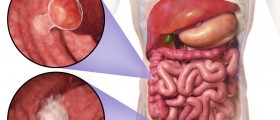
Lungs are certainly among the most important organs in the human body. They are the part of the respiratory system in the humans and have the role to provide the oxygen through breathing. That is why it is extremely important to maintain this part of the body healthy. However, sometimes they can be affected by many disorders or diseases. One of the most serious and life-threatening lung diseases is the lung caner, which occurs due to abnormal growth of the cells in the tissues of lungs. In the majority of cases, the main causes responsible for the occurrence of the lung cancer are smoking, long contact with asbestos and radon gas. The most common symptoms of the lung cancer are pain in the chest, arms and legs, vomiting blood, shortness of breath, and frequent bronchitis and pneumonia.
Two types of the lung cancer
The lung cancer can be small cell lung cancer and non-small cell lung cancer. The small cell lung cancer is usually caused by smoking and is marked by very rapid spread throughout the body. On the other side, the non-small cell lung cancer is more common and can be divided into squamous cell lung carcinoma, adenocarcinoma and large cell lung carcinoma.
Four stages of the lung cancer
When one suffers from the lung cancer, he/she receives the treatment according to the stage of the lung cancer, since there are four different stages.
In the stage I, the lung cancer does not spread to the lymph nodes and in this stage it can be successfully cured by a surgery. According to the size of the tumor, this stage can be divided into stage I A, when the tumor is very small (about 3 cm), and stage I B, when the tumor is slightly larger than in the stage I A.In the stage II, the lung cancer expands to the surrounding lymph nodes and proceeds to the wall of the chest. In this stage, there are cases when the cancer may spread to the lungs lining and even diaphragm. This second stage can also be divided into to the sub-stages. In the stage II A, the small tumor expands to the adjacent lymph nodes, whereas in the stage II B, the tumor is larger and if the lymph nodes are not affected, it tends to spread to the chest wall, the outer lining of the heart and esophagus.In the stage III A, the tumor affects the lymph nodes and may affect chest wall, pleura, or middle of the chest, while in the stage III B, the tumor expands to the lymph nodes on the both sides of the chest and grows in the heart, windpipe and esophagus.In the stage IV, the lung cancer affects the other parts of the body beyond the lungs.
















Your thoughts on this
Loading...